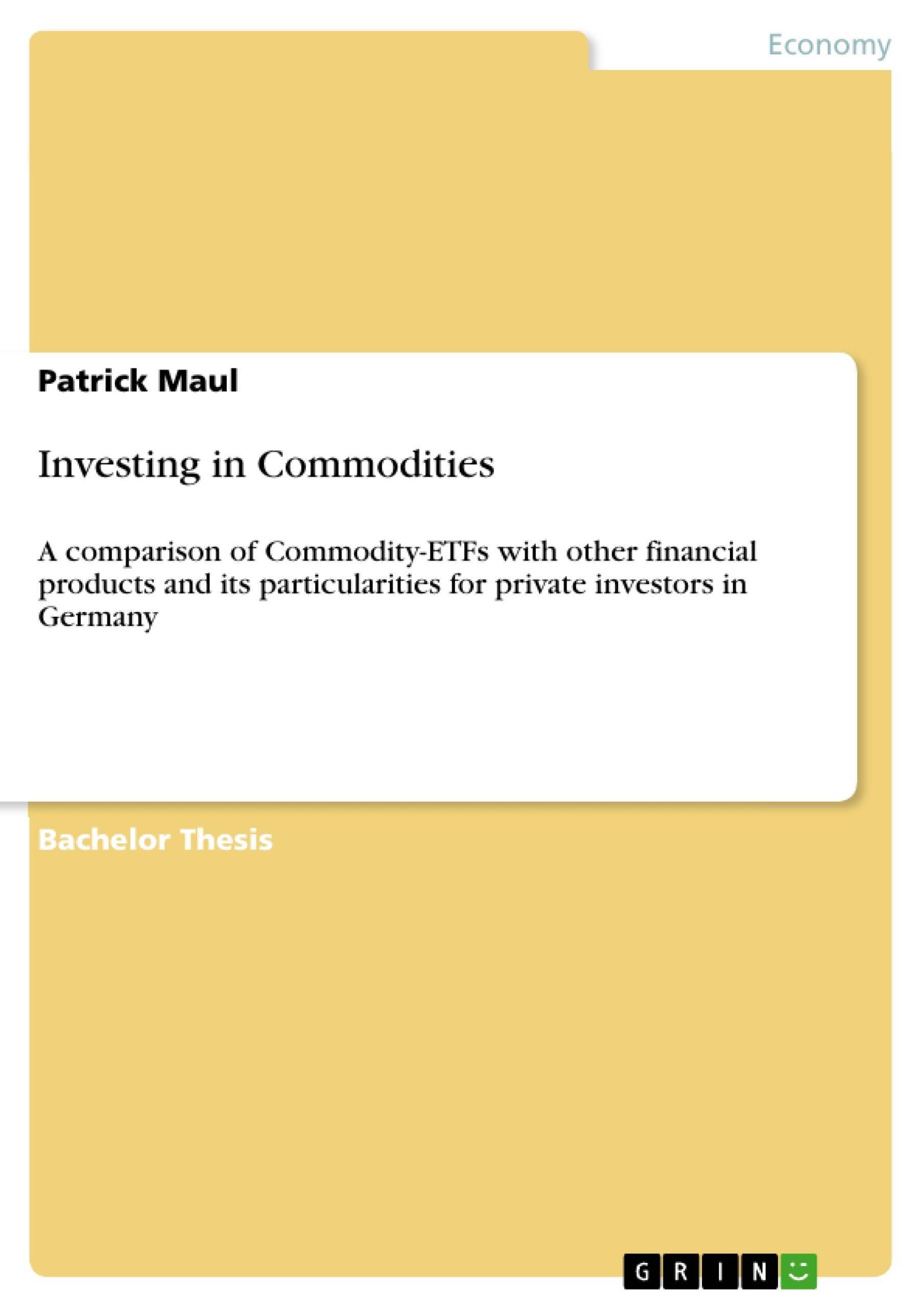Commodities and especially investments in commodities are currently enjoying a high degree of attention by institutional investors such as pension funds and portfolio managers but an increasing interest in commodities can also be found at retail investors. Unlike bonds, stocks, mutual and exchange traded funds, commodities are real, tangible products and part of people’s everyday life. Even though commodities are essential for our survival, recently commodities as an asset class were part of excessive media coverage, investments in that asset class has become interesting for private investors.
In this Bachelor Thesis I give insight into the commodity sector as an investment opportunity especially for private investors in Germany. I will refrain from presenting the historical development of the physical commodity market, but this work shows the facts about the six most important opportunities provided in the financial market to participate in the development in as Jim Rogers describes it: the world’s best market.
Table of Contents
- Introduction
- Price development of selected commodities in 2009
- What happened before 2009?
- Commodities – What is originally meant by that?
- Commodities as an asset class of their own
- Investing in Commodities
- Why should private investors go into commodities?
- Portfolio diversification
- Hedging against inflation
- Hedging against a foreign exchange risk
- Potential for aggressive returns
- How should a private investor invest in commodities?
- Direct investment in physical commodities
- Commodity Stocks
- Derivatives
- Futures
- Mini futures
- Options
- Forwards
- Certificates
- ETCs
- Commodity-ETFs
- Comparison of the investment opportunities for retail investors
- Risk-return profile
- Transaction Costs
- Legal specifics
- Taxation of the investment vehicles
- Holding period and investment target
- Overview pros and cons
- Summary and Conclusion
Objectives and Key Themes
This Bachelor Thesis aims to provide insight into the commodity sector as an investment opportunity, particularly for private investors in Germany. The work focuses on the six most important ways to participate in the commodity market through financial products available today.
- The diverse investment opportunities within the commodity sector.
- The advantages and disadvantages of each investment vehicle for private investors.
- The risk-return profile and transaction costs associated with each investment vehicle.
- The legal specifics and taxation implications of commodity investments.
- Considerations for different holding periods and investment targets.
Chapter Summaries
The introduction explains the concept of commodities, their importance in our daily lives, and their recent surge in popularity as an investment asset class. It outlines the price developments of key commodities in 2009 and the factors that led to these price increases. The chapter also discusses the importance of considering commodities as a separate asset class within a diversified portfolio.
Chapter 2 examines the reasons why private investors might consider investing in commodities. It highlights the benefits of diversification, hedging against inflation and foreign exchange risks, and the potential for high returns. This chapter then delves into the six main ways private investors can participate in the commodity sector, including direct investment in physical commodities, commodity stocks, derivatives, certificates, ETCs, and ETFs.
Chapter 3 compares the various investment vehicles presented in Chapter 2. It analyzes their risk-return profiles, transaction costs, legal specifics, taxation implications, and suitability for different holding periods and investment targets.
Chapter 4 summarizes the key points of the work and provides a comprehensive overview of the various investment opportunities within the commodity sector. It highlights the importance of diversification, understanding the specific risks and benefits of each investment vehicle, and considering individual investment goals when making investment decisions.
Keywords
This work focuses on investment opportunities in commodities for private investors, specifically in Germany. The key topics include investment vehicles such as commodity futures, options, certificates, ETCs, and ETFs. The analysis also examines the advantages and disadvantages of each instrument considering risk-return profiles, transaction costs, legal specifics, and taxation. Furthermore, the importance of diversification, inflation hedging, and foreign exchange risk management in the context of commodity investments is explored.
- Quote paper
- Patrick Maul (Author), 2010, Investing in Commodities, Munich, GRIN Verlag, https://www.grin.com/document/161851



